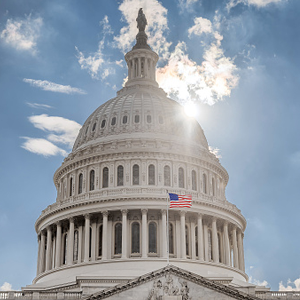Bureau of Economic Analysis
Split Personal Income and Outlays, October 2025 and Gross Domestic Product by State and Personal Income by State, 2nd quarter 2025 and Personal Consumption Expenditures by State, 2024
Personal Income and Outlays, August 2025
Personal income increased $95.7 billion (0.4 percent at a monthly rate) in August, according to estimates released today by the U.S. Bureau of Economic Analysis. Disposable personal income (DPI)—personal income less personal current taxes—increased $86.1 billion (0.4 percent) and personal consumption expenditures (PCE) increased $129.2 billion (0.6 percent). Personal outlays—the sum of PCE, personal interest payments, and personal current transfer payments—increased $132.9 billion in August. Personal saving was $1.06 trillion in August and the personal saving rate—personal saving as a percentage of disposable personal income—was 4.6 percent.
Gross Domestic Product by State and Personal Income by State, 2nd Quarter 2025 and Personal Consumption Expenditures by State, 2024
Real gross domestic product (GDP) increased in 48 states in the second quarter of 2025. State-level changes ranged from a 7.3 percent increase in North Dakota to a 1.1 percent decline in Arkansas.
Personal income increased in all 50 states and the District of Columbia in the second quarter of 2025. State-level changes ranged from a 10.4 percent increase in Kansas to a 0.9 percent increase in Arkansas.
Personal consumption expenditures (PCE) increased in all 50 states and the District of Columbia in 2024. State-level changes in PCE ranged from a 7.0 percent increase in Florida to a 4.3 percent increase in Mississippi.
Principal Federal Economic Indicators
Noteworthy
The Latest
Gross Domestic Product by State, 3rd Quarter 2021
Real gross domestic product increased in 37 states and the District of Columbia in the third quarter of 2021, as real GDP for the nation increased at an annual rate of 2.3 percent. The percent change in real GDP in the third quarter ranged from 6.0 percent in Hawaii to –3.3 percent in New Hampshire and North Dakota. GDP estimates reflect the continued economic impacts related to the COVID-19 pandemic. Government pandemic assistance payments…
Gross Domestic Product by State, 3rd Quarter 2021
Real gross domestic product (GDP) increased in 36 states and the District of Columbia in the third quarter of 2021, as real GDP for the nation increased at an annual rate of 2.3 percent, according to statistics released today by the U.S. Bureau of Economic Analysis (BEA). The percent change in real GDP in the third quarter ranged from 6.0 percent in Hawaii to –3.7 percent in New Hampshire.
Personal Income and Outlays, November 2021
Personal income increased$90.4 billion, or 0.4 percent at a monthly rate, while consumer spending increased$104.7 billion, or 0.6 percent, in November. The increase in personal income primarily reflected increases in compensation of employees and government social benefits. The personal saving rate (that is, personal saving as a percentage of disposable personal income) was 6.9 percent in November, compared with 7.1 percent in October.
Personal Income and Outlays, November 2021
Personal income increased$90.4 billion, or 0.4 percent at a monthly rate, while consumer spending increased$104.7 billion, or 0.6 percent, in November. The increase in personal income primarily reflected increases in compensation of employees and government social benefits. The personal saving rate (that is, personal saving as a percentage of disposable personal income) was 6.9 percent in November, compared with 7.1 percent in October.
Gross Domestic Product (Third Estimate), Corporate Profits (Revised Estimate), and GDP by Industry, Third Quarter 2021
Real gross domestic product (GDP) increased at an annual rate of 2.3 percent in the third quarter of 2021, following an increase of 6.7 percent in the second quarter. The increase was revised up 0.2 percentage point from the “second” estimate released in November. The deceleration in real GDP in the third quarter was led by a slowdown in consumer spending. A resurgence of COVID-19 cases resulted in new restrictions and delays in the reopening…
Gross Domestic Product (Third Estimate), Corporate Profits (Revised Estimate), and GDP by Industry, Third Quarter 2021
Real gross domestic product (GDP) increased at an annual rate of 2.3 percent in the third quarter of 2021, following an increase of 6.7 percent in the second quarter. The increase was revised up 0.2 percentage point from the “second” estimate released in November. The deceleration in real GDP in the third quarter was led by a slowdown in consumer spending. A resurgence of COVID-19 cases resulted in new restrictions and delays in the reopening of…
U.S. International Transactions, Third Quarter 2021
The U.S. current-account deficit widened by $16.5 billion, or 8.3 percent, to $214.8 billion in the third quarter of 2021, according to statistics released today by the U.S. Bureau of Economic Analysis. The revised second-quarter deficit was $198.3 billion. The third-quarter deficit was 3.7 percent of current-dollar gross domestic product, up from 3.5 percent in the second quarter.
U.S. Current-Account Deficit Widens in Third Quarter 2021
The U.S. current-account deficit, which reflects the combined balances on trade in goods and services and income flows between U.S. residents and residents of other countries, widened by $16.5 billion, or 8.3 percent, to $214.8 billion in the third quarter of 2021. The widening reflected a reduced surplus on services and expanded deficits on secondary income and on goods that were partly offset by an expanded surplus on primary income. The…
Personal Income by State, 3rd Quarter 2021
State personal income increased 2.6 percent at an annual rate in the third quarter of 2021 after decreasing 20.2 percent in the second quarter. The percent change in personal income across all states ranged from 6.7 percent in the Kentucky to –4.3 percent in North Dakota. Personal income estimates reflect the continued economic impacts related to the COVID-19 pandemic. Government pandemic assistance payments to households and business…
Personal Income by State, 3rd Quarter 2021
State personal income increased 2.6 percent at an annual rate in the third quarter of 2021 after decreasing 20.2 percent in the second quarter. The percent change in personal income across all states ranged from 6.7 percent in Kentucky to –4.5 percent in North Dakota.



